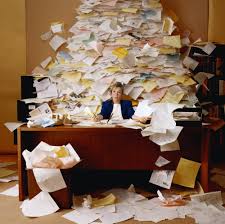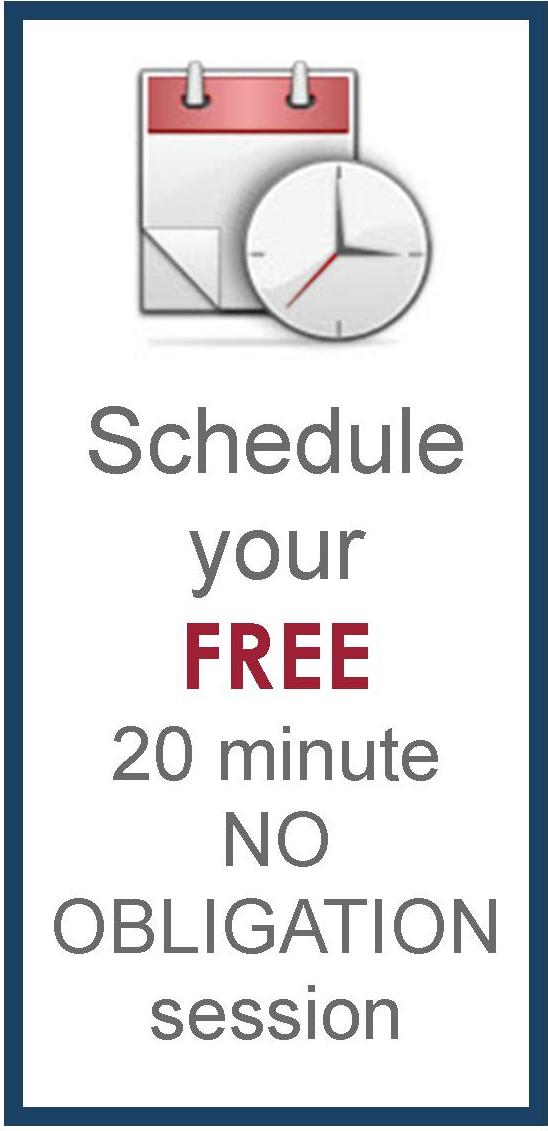Spring cleaning: 5 tips to declutter your mind and space

Do you need to do a little spring cleaning to reduce all those papers flooding your office? Now’s the time to do it. If you are about to go on Spring Break, or just returning from one, here are a few simple tips to help you declutter your space, get on with your work, and feel better about your life, too. I’ve been there. I know exactly how disheartening it feels to walk into your office and feel like you’d rather turn tail and run than stay in that stifling space. Everything I am saying here is all stuff I’ve implemented for myself to create some mental and physical space. Even a bit of peace, too.
Create a system to help you declutter
Why? Because a system:
S-Saves
Y-You
S-Stress
T-Time
E-Energy
M-Money
Having a system helps you successfully declutter your brain and keep it decluttered. The word clutter comes from old English, as in “clot.” Clotted cream. Clotted blood. The commonality is stopping the flow. Not what you want when getting on with life as an academic. Professional organizer Barbara Hemphill says, “Clutter is postponed decisions.”
Creating a simple system for yourself can help you move forward in the work you need to do without drowning in paper. A common problem for academics. There are some good reasons why it’s harder for academics to let go of papers than for other people. To stop you feeling like a reality show “hoarder,” take a look at Malcolm Gladwell’s wonderful piece titled “The Social Life of Paper.” For “knowledge workers, piles of paper represent the process of active, on-going thinking.” Partly this is because they are often involved in collaborative, interactive projects. More importantly, they have found something that interests them in relation to a project, but they do not yet know what to do with it. The paper mountain blocking flow grows in their office until they do.
Here are five easy tips to help you excavate the mountain and declutter:
1. Physical Space
Consider yourself the air-traffic controller and move outward. Start with the necessary must-have items closest to you, then move outward toward those items that do not need to be within reach. If you really don’t need it, move it further away from you and your workspace.
- Desktop tools such as a stapler, pencils/pens, copier/scanner or anything you would normally use; my tools include scissors and a charging cord for my phone.
- Wastebasket, recycling bin and small shredder in immediate reach of your hands; if you wait to shred things you know need to be shredded or take a pile to a recycling bin, it’s most likely going to pile up and not actually get done. I know. I’ve walked for days past piles that really needed to go into the industrial strength shredder.
- Calendar (electronic or paper, but only one). If you do not do this, you are likely to double-book yourself with a doctor’s appointment and a class. Yes, I’ve done that too.
- Contact Management (electronic or paper system, but only one file). This keeps you from constantly searching for “where did I put her phone number? I know I just saw it somewhere. Wasn’t that in an email she just sent me? Drat. That’s a really old email and there is no phone number on the signature line.” All the various contact files make this process super simple. And my email program even pops up a note to say, “new contact information found. Add to contacts?” I always say “yes,” even if I have no idea if I will ever need it. You just never know when it could come in handy.
2. Action Files
Next take a look at your “action files” which can be file folders with things you are working on right now, such as articles, course curricula, course materials, etc. These need to be within reach, but not as immediate as on top of your desk or workspace. They might live in a file drawer next to you, or in a wire stepped file on top of your desk so you can see the headers on your folders. Mine are in a file drawer attached to my desk so I can literally pull out the things I work on regularly without having to search. It will come as no surprise to you that one of the action files is labeled “Newsletter.”
Larger projects can be placed into larger boxes. Lots of my clients use storage boxes for book projects. I prefer transparent plastic, of any color, so you can see what’s there without always having to look inside the box. For some of you, a portable plastic file on wheels is a great solution to moving from work office to home office and back again.
3. Reference Files
This refers to the material you use less frequently, papers that are already published, books on various topics, old class notes with student information and grades, old seminar notebooks from workshops you may have attended years ago. Remember you will want to shred anything with a social security number before you put them aside! These items can be physically located farther away from where you are in the control tower (desk), like in file cabinets along the wall, or bookshelves in your office or other rooms. They can even be materials you want to keep but stored off-site—though I do not recommend that since that’s another form of delaying decisions unless there is some legally compelling reason to keep them. Books, on the other hand, constitute a particular vice for me, but spreading them throughout the house makes it seem like I have less of them than I do. Besides, I do actually go back and use them on occasion.
4. End overwhelm—or at least reduce it
Remind yourself that the easiest way to get anything done is one small step at a time. If you want to declutter your space, you might find it easiest to work in 15-minute increments but expect to do this for several days in a row before you begin to see results. Trust me, you will eventually see results! Pick the easy stuff first: if there are old files you do not expect to use again for a while, if ever, move them to the reference locations. Don’t spend any time worrying about the stuff you are working on right now.
What you want to do is eliminate the distraction of old material that is just getting in your way. I mean literally in your way. I have been guilty myself of just moving one pile to another space, usually on the floor, just to work on a current project. I’ve sometimes tripped over a pile when I was in a hurry to get out the door, creating a snowstorm of scattered papers. Definitely not a welcoming sight when you walk back into your workspace.
5. Reward yourself
This does not mean running out to see a movie because you successfully spent 15-minutes cleaning up. It means taking a short break to clear your head. Maybe get a cup of coffee or tea. Maybe take a quick walk around the building or stand up from your chair and do a few simple stretching exercises while breathing deeply. This immediately helps clear your brain by putting more oxygen in it. Stepping away from the desk can help make it easier to do something new when you sit down again.
These simple things are a great way to declutter. Now enjoy your new found freedom.
Tags: declutter, get organized, Getting Organized, procrastination







Pingback: Six ways to get unstuck in your career - Transitioning Your Life